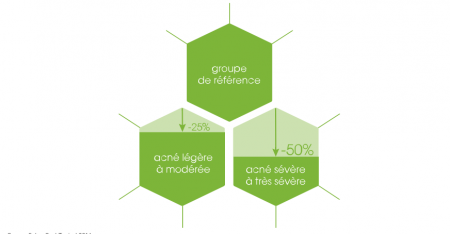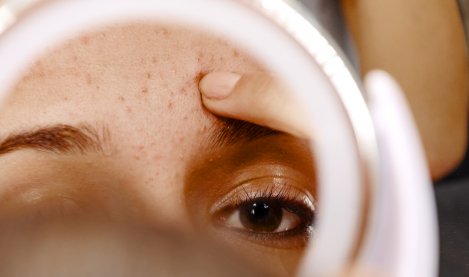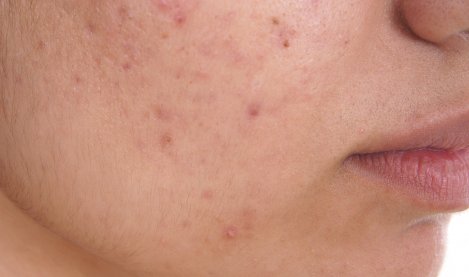The skin works as a ecosystem, which needs to be preserved and protected on a daily basis. Sebum plays an essential and positive role for healthy skin. It would be a mistake to try to completely eliminate it, even for acne-prone skin: instead, it should be regulated and rebalanced. Our experts are here to tell you all about sebum, including its purpose, and explain the causes of hyperseborrhoea and the role of dysseborrhoea.
What is sebum?
Note that sebum is produced by the sebaceous glands, which are attached to hair follicles, in response to hormonal stimulation. This is why puberty is a period favourable to acne.
Sebum is a complex mixture of lipids synthesised under hormonal stimulation by sebaceous glands in the dermis. Among other things, it helps hydrate your skin and delivers lipophilic antioxidants (lipophilic = with affinity for fats) onto its surface.
In subjects with acne-prone skin, there is abnormal sebum production and a lack of vitamin E. These disruptions can lead to the development of acne, blackheads or whiteheads. Squalene oxidation is higher in men than in women but starts earlier in women.
What is the purpose of sebum?
Sebum is composed of lipids and contributes to the skin barrier function. It protects the skin from damage, especially UV-induced oxidation. At temperatures below 30°C, it thickens and forms a barrier that repels rain for example, whereas heat makes it more fluid, enabling it to mix with perspiration and retain water.
It is therefore very important to the cutaneous ecosystem, provided that its quality is good and that the right quantity is produced.
The causes of hyperseborrhoea
Hyperseborrhoea = excess sebum. Excessive sebum production leads to oily skin; certain factors heavily influence this production.










